This post contains affiliate links to kitchen tools we use and recommend
These sweet potato protein brownies are made in the delicious fudgy-style. They taste so amazing, you won’t believe the recipe includes no butter, no refined sugar, no white flour, and no chocolate… or that they have only 139 calories. (Compared to traditional brownies the same size with 280 to 320 calories). Are these the best brownies in the world? Maybe. Maybe not. Traditional brownies made with gobs of butter and cups of sugar, with the crackly tops, we must admit, are decadent. But for a healthy physique-friendly protein brownie, this one is the best I’ve ever had, calorie-for calorie, macro-for-macro.
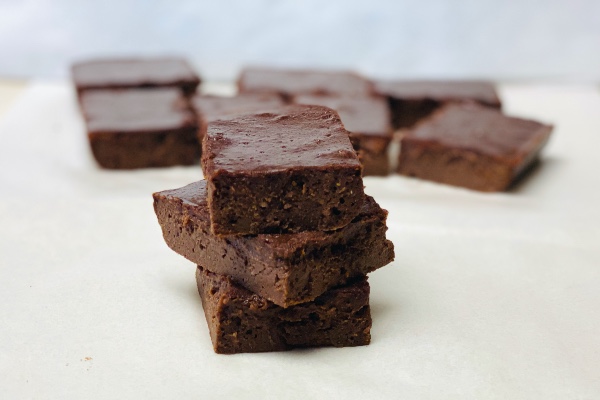
Brownie Types: Fudgy Or Cakey
There are two categories of brownies: cakey and fudgy. (Some say chewy is a third). Fudgy brownies are more dense. Cakey brownies are lighter and fluffier. They rise more during baking as little air pockets are created.
Whether a brownie recipe is cakey or fudgy depends on the ingredients. That includes how much flour and fat there is, and whether leavening is used or not.
The main ingredients in traditional brownies are eggs, chocolate, sugar, butter and flour. These make for rich, dense, fudgy brownies with a deep chocolate flavor. Of course they’re not healthy or low calorie.
To get a dense, fudgy, healthier brownie, the secret is natural peanut butter. While peanut butter is high in calories too, it’s a healthier fat. It’s also the only calorie-dense ingredient in our brownies. Using sugar-free maple syrup instead of a powdered sweetener also helps make these brownies fudgy and moist.
Fudgy brownies are also made with less flour – usually around half a cup. Our sweet potato protein brownies use only a quarter of a cup of oat flour. That’s not only because we want fudginess, but also because protein powder replaces some flour.
For fudgy brownies, the baking time may be slightly less than for a cakey brownie. Overbaking dries out the brownies more. if you err slightly on the under-baking side, these brownies will stay fudgy and soft – even a little creamy on top. You don’t want them too under-baked though, or they’ll end up with the consistency of firm peanut butter. They’ll still taste great, but be stickier and messier to eat.
The biggest difference between fudgy and cakey is leavening. If you want fudgy, leave out the leavening (no baking powder or baking soda).
If you like your brownies a little more cake-like and less dense, include 1 tsp of baking powder. I’ve made this with and without the baking powder. The brownies are great either way, but there is a difference. I decided to stay with fudgy.
By the way, brownie purists argue that fudgy is the only way to go. They’ re certainly more popular. In a Facebook survey I conducted, with about 100 responses, only 2 people said they preferred cakey brownies. That said, cakey is a perfectly fine option.
What kind of Cocoa should you use in protein brownies?
If there’s no chocolate in these brownies, then how do we make it taste like chocolate? Simple, we use chocolate protein powder and unsweetened cocoa powder.
There are two kinds of cocoa – natural (the regular kind) and Dutch process. The Dutch-process cocoa powder is darker (think Oreos).
If you search online for “best cocoa for brownies,” you come up with many recommendations for the Guittard Dutch Cocoa. I’ve tried it and it’s indeed dark and rich, but the regular unsweetened (natural) cocoa available in your grocery store (like Hershey’s brand) works great too. Try both if you want, and see if you have a preference.
The Dutch cocoa also has more fat so using regular cocoa is another way to drop calories. It may only save 40 calories in the whole batch, but it’s yet another reason the calories are so low in our brownies. (I’m always looking for any way to cut calories).
By the way, if you’re following a recipe like ours that doesn’t include baking powder or baking soda, it doesn’t matter which cocoa you use. If you’re using baking soda to make a more cakey brownie, stick with natural (traditional) cocoa powder. That’s because it has to combine with acidic ingredients to leaven, and in Dutch-processed cocoa, the powder has been processed to remove acidity.
How Much Fat Is In Sweet Potato Protein Brownies?
No type of brownie is a low-fat food. Yeah, I know, if you Google hard enough, you’ll find fat-free “brownies.” I’m not dissing, but let’s call a spade a spade. Those are cakes, not brownies.
Classic brownie recipes use loads of butter – usually at least 8 tablespoons (that’s a whole stick!) On top of that, there’s cocoa butter in the chocolate. The saturated fat count in regular brownies is through the roof! We want brownies that keep you healthy and also help you lose body fat by saving you calories. That’s why we don’t use butter or chocolate.
The dilemma is, if there’s no fat of some kind used, there’s no way you’ll get a rich and fudgy brownie. What’s a healthy baker to do? Use a healthier fat, of course. We used peanut butter. That helps keep these brownies fudgy.
And even with chocolate being the dominant flavor, you still notice the taste of peanut butter underneath – and who doesn’t like chocolate plus peanut butter?
I suggest weighing your ingredients, especially peanut butter on a good digital food scale. It’s important in baking to get a consistent product. It’s equally important for calorie control. Peanut butter is notorious for being underestimated when scooped out by tablespoons or cups (volume). But a gram of weight is a gram of weight, always.
We also keep two whole eggs in the recipe. Some recipes are fine with egg whites only, and that saves calories, but for fudgy, rich brownies, we use the whole egg. Of course, this also boosts the protein.
What’s The Best Sweetener For Protein Brownies?
Most brownie recipes call for at least a cup of sugar. I’ve seen many at 1.25 to 1.5 cups, and some that use 2 cups! That will make the brownies super sweet, but also hyper-caloric and wicked unhealthy if it’s anything but a rare treat.
In my first batch of sweet potato protein brownies, I used a half a cup of regular pure maple syrup as one of the sweeteners and only a couple packets of non-caloric sweetener to boost it a bit. It was good, but not sweet enough for my tastebuds. In later batches, I used 2 tablespoons of Truvia Naturally Sweet (a crystalline stevia/erythritol sweetener) and it was better.
Maple syrup may be slightly more nutritious than table sugar, and I use it at times without guilt (because I don’t use a lot), but it’s still sugar by another name and very high in calories. Looking at the macros, I wondered if sugar-free or light maple syrup would still work. I was hoping so, because the calorie savings are huge! We’re talking about slashing 420 calories off of the whole batch!
Good news – it worked fine with light maple syrup! The consistency of the brownies was still the same. I still felt it could be a bit sweeter though. So, ultimately in the final version, I bumped the Truvia up to 4 tablespoons, and it was perfect.
Looking at the conversion charts, I saw that 4 tablespoons is equal to just over half a cup of regular sugar. If there’s half a cup of maple syrup and the equivalent of half a cup of sugar (via sugar substitute), then this approximates the sweetness you’d get in a traditional brownie, but without all the calories.
The Healthy Secret Ingredient: Sweet Potato
In Burn the Fat Feed the Muscle recipes, our goal is not only to avoid unhealthy ingredients but also include healthy ones. It’s not just about calories and macros – it’s also about nutrients. You can’t do much better than sweet potatoes – they’re a staple food in bodybuilding and fitness diets.
You could easily bake, skin and mash whole sweet potatoes, but a much faster and easier option is canned sweet potato puree.
Look for the natural kinds that have only one ingredient: sweet potatoes. This type may not be stocked in regular grocery stores but most health food stores carry it. I usually go to Amazon and order the Farmer’s Market brand sweet potato puree.
The puree serves another purpose as a fat (I.e. butter) substitute, much like applesauce is used in muffins and cakes. It’s not a one to one replacement – it’s usually used in place of 50% of the butter. But since we use peanut butter as the other fat source in this recipe, just three-quarter of a cup of puree is perfect.
The sweet potato also adds a nice additional layer of flavor – you get just a hint of it underneath the chocolate.
Mixing The Brownie Batter
Be sure to mix the liquid and the dry ingredients separately and then add the liquid in to the dry. Then mix the wet and dry until they are fully integrated.
This is important if you want a nice, even batter without chunks or spots of anything. Little clumps of peanut butter aren’t so bad, but spots of dry flour or protein powder in your otherwise moist, fudgy brownie are a bummer.
If you’re going to add baking powder, it’s also important to mix all those dry ingredients together so the leavener is evenly dispersed.
Avoid overmixing. On one hand you want all the ingredients fully combined, but if you overmix, it can produce air bubbles which makes the brownies fluffier and cakier rather than denser and fudgier. Mix the ingredients just enough and then no more. It’s okay if there are still little specks of peanut butter that didn’t completely disperse, just make sure there are no pockets of powder.
Don’t leave any batter behind. If you do, you know you’ll lick the whole bowl (bowl and spoon-licked calories do count you know). The ideal tool for mixing and transferring every last drop of batter into the pan is a rubber/silicone spatula.
The batter is thick, but it should spread out when you pour it into the baking dish. If not, simply spread it around until it’s settled in evenly. Then you’re ready to pop it into the oven.
What Kind Of Baking Pan Is Best For Protein Brownies?
The size of the pan matters because the amount of batter indicated in a recipe is used in conjunction with a specific pan. I used an 8 X 8 inch aluminum baking pan.
It’s not that you can’t use a larger one (you can, and some recipes call for them). But if you use the same amount of batter, it will spread out into the larger pan more thinly because of the greater surface area. That may affect the baking time and the end result (thinner, drier, overcooked).
Conversely, if you follow a recipe that calls for a larger pan, but you use the same amount of batter in a smaller pan, your brownies may be thicker. That might lead to the centers being undercooked.
At first I only had a glass (Pyrex) 8 X 8 baking dish in that size. It worked fine – the brownies were delicious – but they did stick to the bottom a little – I think baking in glass is faster (which might call for less time or lower temperature).
Around the same time, I learned that aluminum (light) silver pans conduct heat more evenly and are less likely to lead to bottoms or edges overbaking or burning. I discovered this when I made the first batches of my protein banana bread in a dark (nonstick) 9 X 5 meatloaf pan. It came out great, but the bottoms and edges were dark brown – not burned, but close to crispy.
When I switched to the silver aluminum 9 X 5 pan, the bottoms and edges were light golden brown. I never went back, and in fact, added the 8 X 8 silver aluminum pan to my cookware collection for brownies. (This one: Nordic Naturals aluminum 8 X 8 baking pan)
If you only have dark metal or glass baking dishes, no problem, just remember you may need to reduce the baking time. 20 to 22 minutes might do it, versus 23 to 25, and you may want to check it even earlier, watching for doneness.
Regardless of the pan you use, it helps if you grease the bottom with nonstick spray. Another option is to line the bottom with parchment paper. If you use enough so there’s extra hanging over the sides, then you can easily lift the brownies right out of the pan and onto a cooling rack, plate or platter.
Another option that I haven’t tried yet is to use a brownie tin, (it’s like a muffin pan) and then you eliminate the problem of cutting your chocolatey creations into perfectly sized squares. (which never seems to happen unless you break out a ruler and score the edges exactly where you want to cut).
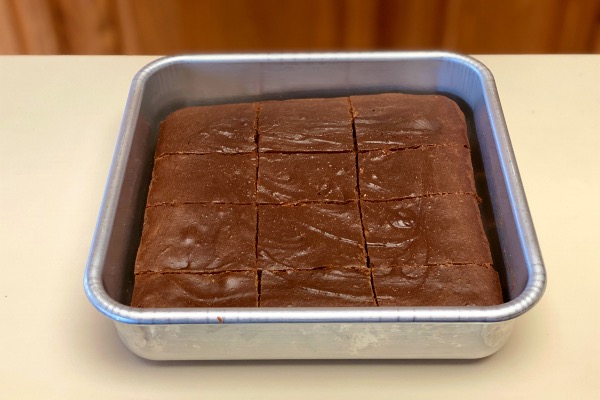
Baking Time For Protein Brownies
Baking time can be tricky because it may vary. Oven temperatures may differ. Then you have differences in cookware, as mentioned above.
Which rack you use matters too. On the bottom rack, your brownies may overcook or burn on the bottom. On top, they may be left undercooked. That leaves the middle rack as the happy medium. It’s where heat is most evenly distributed and is ideal for brownies and similar items like cookies, cakes, and muffins.
Try the prescribed baking time on your first batch. In our case it’s 23 to 25 minutes. Start checking at least 5 minutes early. If it’s done early, write down the baking time. If it’s under-done, leave it in a little longer and when finally done, write down that time. This will be how long you’ll bake for in the future with your oven and your cookware.
When Are Your Sweet Potato Protein Brownies Done?
The classic way to check for doneness is to stick a toothpick in, and when you pull it out, it should have only a few crumbs or a thin trace of batter on it. If the toothpick is coated thick with wet batter, it’s not done yet.
I discovered there are other ways to check doneness with visual inspection. This helps a lot because sometimes that toothpick test doesn’t tell the tale (not to mention it saves you from poking a bunch of holes in your brownies, if holey brownies bug you).
First, if the edges start to become a little lighter brown in color and appear to be drying, while the center is a little darker and still looks just slightly under-done, that’s my number one way to tell it’s ready. If the center looks dry and lighter, you’re already overcooked. You may also notice that the sides will shrink slightly away from the edges of the pan, which also indicates done or almost done. (You can see all of this in the photo of the cut brownies above).
Perfectly baked fudgy brownies actually look slightly underdone in the middle when you take them out of the oven. That’s okay as long as it’s set (not wet or jiggling). It’s better to be slightly under-done in the center than overdone. That’s because the brownies will continue to cook a little more after they’re out of the oven and will solidify more as they cool, especially if you refrigerate.
Oh, and don’t forget to use a kitchen timer. It’s always the worst feeling when you walk away and forget your goodies were in the oven, until it’s too late.
Cutting Your Protein Brownies
Be sure to let your sweet potato protein brownies cool before you cut and serve them. They’ll cut more cleanly that way. Some people even like to put them in the refrigerator or freezer briefly to expedite the cooling.
If you cut them right out of the oven, you’ll usually pull up batter and crumbs with every knife stroke and your cut brick of brownies will look like a plowed field instead of my picture above. Still tasty, but not as presentable.
Once cooled, use a sharp knife, and it may help to dip it in hot water first, wipe it dry and then cut in an up and down sawing motion. Any time brownie clumps onto the knife, wipe it again before continuing. If batter sticks to your knife like warm peanut butter, your brownies were undercooked. (Don’t worry, while messy, they’ll still taste great, but remember to bake longer next time).
Storing Sweet Potato Protein Brownies
After you cut your brownies, store them in an airtight container, or you can cover the pan tightly with plastic wrap or aluminum foil.
If you leave them out at room temperature, they’ll keep for about three days. They’ll stay fresh a little longer, maybe five days, if you put them in the refrigerator. They’re equally tasty at room temp or chilled or even out of the freezer. In fact, out of the freezer, it’s like eating a fudgecicle!
If you’re not going to eat them within several days, freeze them. If you’ve already cut them, the best bet is to wrap each brownie in plastic or foil, and then put them in an airtight ziplock storage bag. If you didn’t cut them, you could put the pan in the freezer, and when it hardens, remove the whole block of uncut brownies, and wrap that in plastic or foil and zip that up in a large airtight storage bag. Then cut them later.
Except for making the “brownie fudgecicles”, I’ve never had to freeze any yet for storage / future usage purposes. Every last sweet potato protein brownie is always devoured by family or friends who wandered through the kitchen, where they were left out on the counter in all their tempting glory. Good thing they’re almost guilt-free with only half the calories.
Until next time,
-Tom Venuto,
Author, BFFM Guide to Flexible Meal Planning for Fat Loss
PS. Leave a comment below and let me know what you think of this yummy goodness.
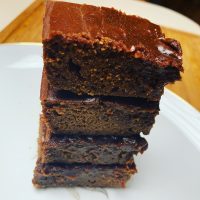
The Best Sweet Potato Protein Brownies
Ingredients
- 184 g Sweet potato puree (3/4 cup)
- 192 g Natural smooth peanut butter (3/4 cup)
- 1/2 cup Sugar-free maple syrup
- 2 large Whole eggs
- 1 tsp Vanilla extract
- 22.5 g Oat flour (1/4 cup)
- 46.5 g Chocolate whey protein (1/2 cup)
- 20 g Unsweetened cocoa powder (4 Tbsp)
- 4 Tbsp Truvia Naturally Sweet
- 1/4 tsp salt
Instructions
- Pre-heat oven to 325.
- Prepare an 8 X 8 baking pan, coat bottom with nonstick cooking spray.
- Measure the peanut butter in mixing bowl (on scale preferably). If not room temp and easily mixable, heat in microwave for 30 seconds.
- Add sweet potato, eggs, maple syrup and vanilla extract to bowl. Stir with rubber/silicone spatula to combine until smooth.
- In separate mixing bowl, stir together protein powder, cocoa powder, oat flour, salt, and sweetener.
- Pour dry ingredients into wet and mix thoroughly into thick batter.
- Pour batter evenly into baking pan.
- Bake at 325 in the center rack for 23-25 minutes.
- Check early for doneness. It's done when the edges start to look drier and lighter in color, and a toothpick inserted in the center comes out mostly clean (not covered with thick wet batter).
- Allow to cool at room temperature for 1-2 hours first before cutting.
Nutrition
Disclosure: Burn the Fat Blog posts may use affiliate links to third-party websites and online stores, and earn a commission if products or books are purchased. We never recommend or link to products we haven’t used and fully endorse. However, always do your own due diligence if purchasing from a third party merchant on the internet.



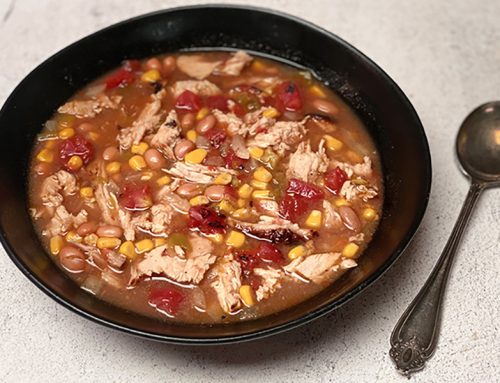
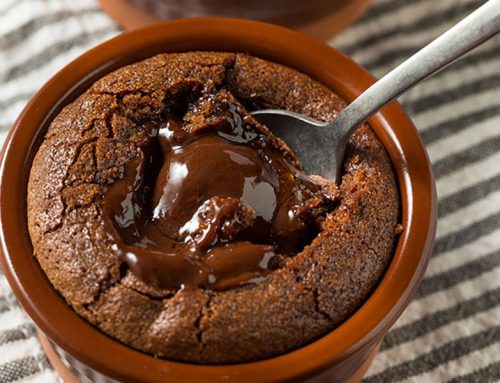
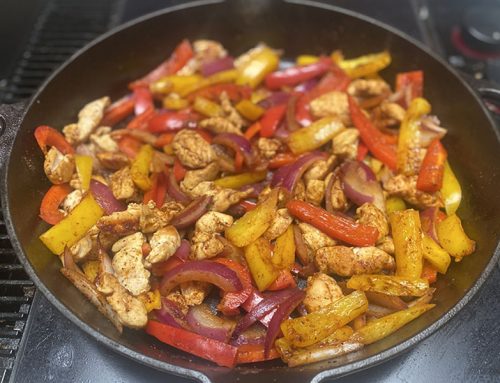
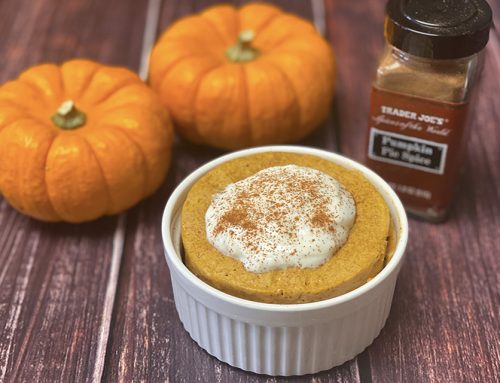
Hi Tom, what I love about your recipes is I can modify them for what I have in the house and they usually come out just fine :) Last night I did that with your brownie recipe. I didn’t have a sweet potato so I used a white potato. I didn’t have any eggs only egg white so used a 1/2 cup instead of the 2 eggs. Was out of vanilla so used a little cinnamon. Anyway, it all still worked out just fine. The family is always leary of “diet desserts” but everyone tried them and said they were pretty good. Next time I go to the store I’ll get the missing ingredients and try them to your recipe. These will definitely be in my list of desserts from here on as they are super filling. I cut them in bite sizes and froze some too.
Dawn, thanks for your post. That is interesting it worked out with white potato – I had never even thought of that. I had planned to try something similar with black beans. For a “diet dessert” these are indeed pretty darn tasty! (Great out of the freezer too). Cheers! (PS. I find that vanilla extract can easily be omitted from many similar recipes)
Great recipe. It was nice and chocolate-y without tasting like a modified recipe. We used almond butter and duck eggs, but everything else was just like the original recipe. This one definitely is a keeper and we will make it again.
Glad you liked it! You’re the second person who told me they used almond butter and said it was great.
Love the fudgie texture of these! They are great from the fridge. Perfect for satisfying my post-meal chocolate/sweets craving.
Glad you loved it. They are great from the fridge (from the freezer too aka “fudgcicles!”) Don’t forget to rate the recipe (stars above). cheers!
Another “husband-pleaser”! My husband is a fudge connoisseur… he loved these! Didn’t have chocolate protein powder, so I used my birthday cake protein powder sd they still tasted great. I had to keep mine in my oven a little longer… but just keep checking for doneness. Baked these the “fudgy” way, which usually isn’t my preference, but even I was still impressed with how good they were!
Oh man so good and macros are great
Would substituting pumpkin for the sweet potato work?
I haven’t tried it but im sure it would. canned pumpkin and canned sweet potato have the same consistency… and I LOVE me some pumpkin! If you try it, circle back and let me know how it came out!
I made these but substituted pumpkin purée instead of the sweet potato because I couldn’t find any locally and didn’t want to wait for Amazon delivery. The brownies came out great and tasted fantastic for what ingredients were used. Thanks for the recipe sure is a “game changer”
Michael, glad you liked it! It is IS pumpkin season!
Yummieeeee! I’ve been eye-ballin’ these babies for a while now! Finally made ‘em tonight and I gotta say, theyre pretty amazing for a protein ‘healthy’ brownie! I didnt have sweet potato so I used puréed pumpkin (I use that in everything so I always have it in the pantry and my dog loves it too!), and I also added 15 grams of mini Ghiradelli chocolate chips (70 total calories/12 brownies, so it only adds about 6 more delicious chocolaty calories! ). The texture is GREAT, not rubbery like other protein brownies I’ve made. There is another recipe I’ve tried that uses black beans and that was a good one too, but this one is great! I also used part BLACK cocoa / part Double Dark cocoa blend (King Arthur). They smell peanut buttery (which I LOVE but hubby does NOT (weirdo) ;) so next time I’ll substitute with Almond butter so he can have some too… I swear I didn’t deliberately use peanut butter just so I could eat them ALL! LOL. Will be freezing these (after I have another one…) so I can have them whenever a craving hits! THANKS AGAIN TOM!!
Glad you like them! These come out great with almond butter too. They taste almost exactly the same with pumpkin puree as sweet potato puree. The chocolate chips are a nice extra treat – I dont use them often, but when I do, the Lily’s dark chocolate sugar free baking chips are great. Please be sure to give the brownies a rating if you didn’t yet. Thank you.